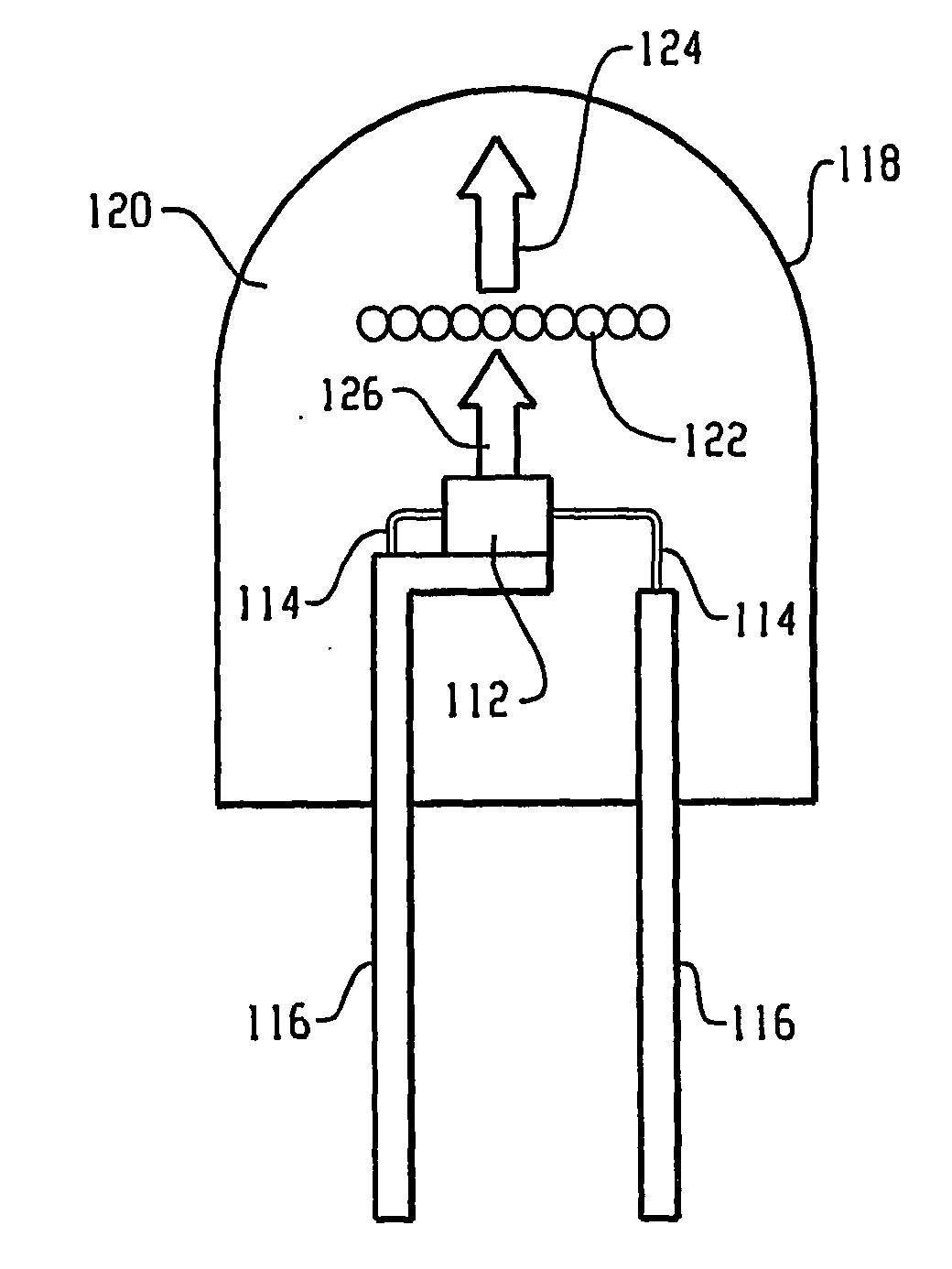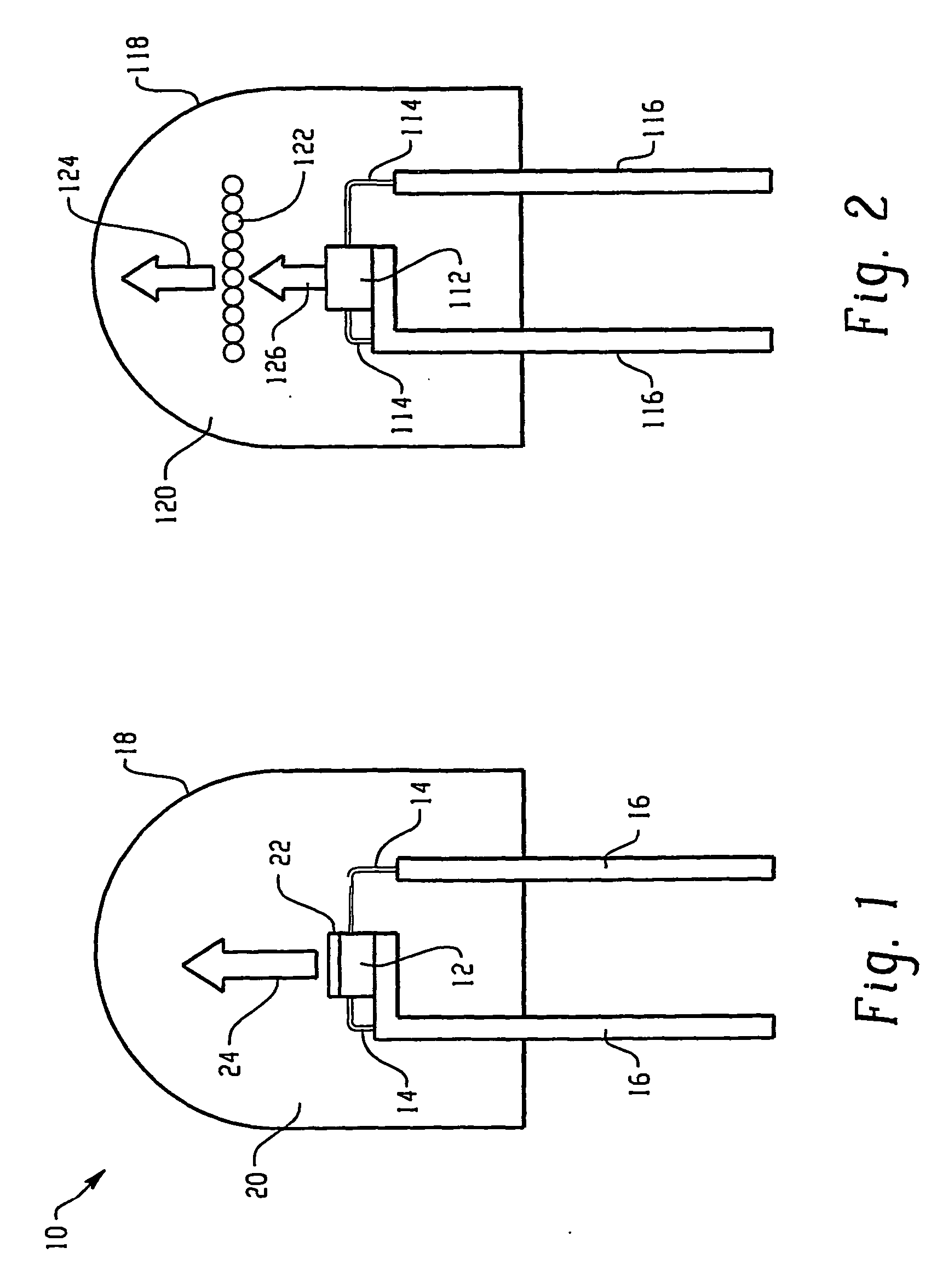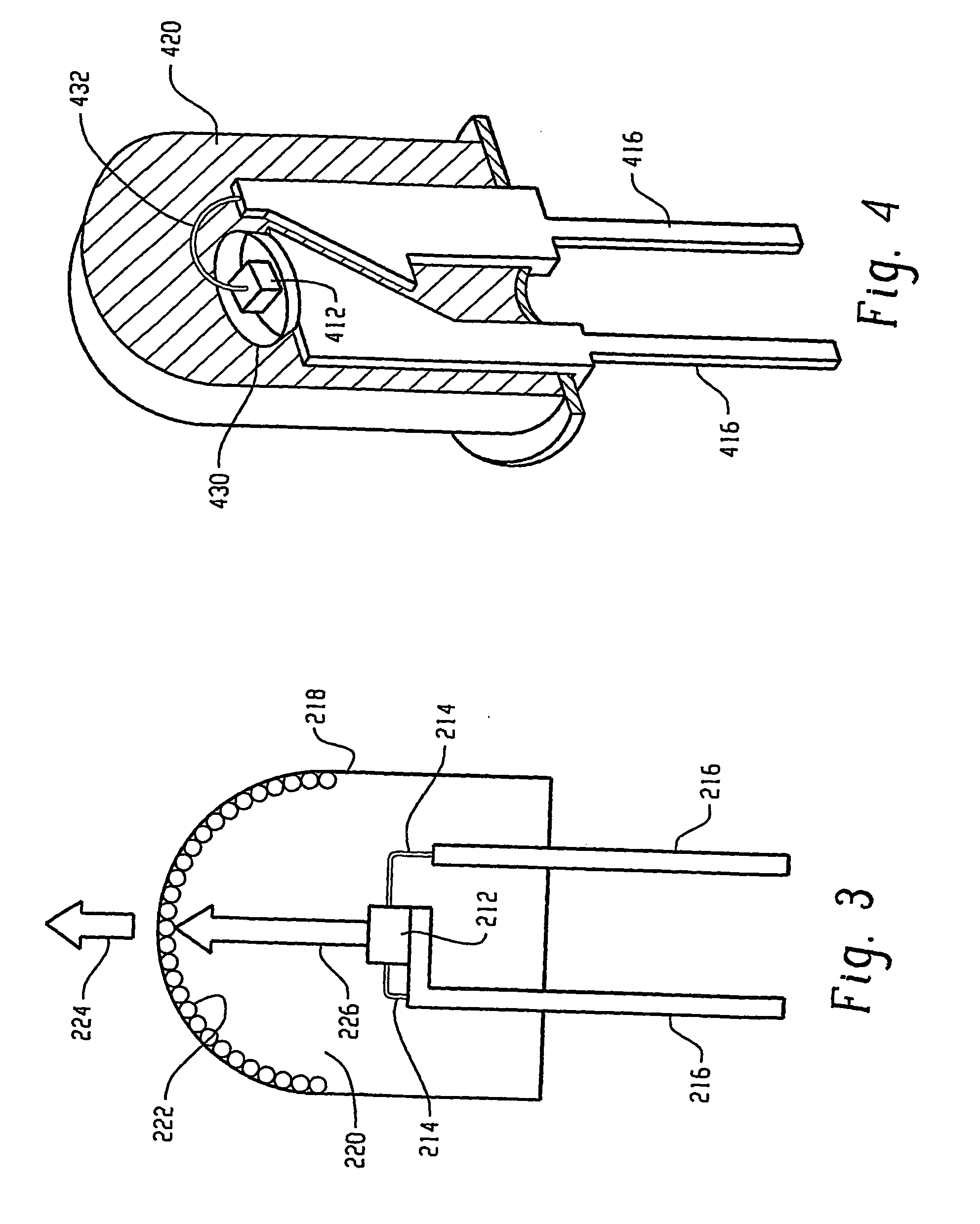Full Spectrum Phosphor Blends for White Light Generation with Led Chips
a technology of led chips and white light, applied in the field of phosphor blends, can solve the problem that led chips are not suitable for lighting use, and achieve the effect of improving the efficiency of lighting
- Summary
- Abstract
- Description
- Claims
- Application Information
AI Technical Summary
Benefits of technology
Problems solved by technology
Method used
Image
Examples
examples
[0062] Various light sources using phosphor blends according to the above embodiments are presented. Two different trials were conducted with the results shown in the tables of FIGS. 7 and 8, respectively. The phosphors used in the trials of FIG. 7 are 3.5MgO*0.5MgF2*GeO2:Mn4+ (“MFG”) as red, Ca5(PO4)3Cl:Eu2+,Mn2+ (“HALO”) for orange, SrAl2O4:Eu2+ for green and (Ca,Sr,Ba)5(PO4)3Cl:Eu2+ (“SECA”) for blue. The phosphors used in the trials of FIG. 8 are 3.5MgO*0.5MgF2*GeO2:Mn4+ (“MFG”); Ca5(PO4)3Cl:Eu2+,Mn2+ (“HALO”); SrAl2O4:Eu2+; Sr2P2O7:Eu2+,Mn2+ (“SPP”); Sr4Al14O24:Eu2+ (“SAE”); (Sr,Ba,Ca)5(PO4)3Cl:Eu2+ (“SECA”); and (Sr,Ba,Mg)4Si2O8:Eu2+,Mn2+ (“SASI red”).
[0063] The specific amounts (in percents) of each phosphor based on spectral weight is shown in the Tables along with the spectral contribution of UV bleed. The predicted color coordinates on the CIE chromaticity diagram (x and y) of these phosphors along with the luminosity (lm / W), CRI values (R1-R14, Ra), and coordinated color...
PUM
| Property | Measurement | Unit |
|---|---|---|
| CRI | aaaaa | aaaaa |
| CRI | aaaaa | aaaaa |
| Ra | aaaaa | aaaaa |
Abstract
Description
Claims
Application Information
 Login to View More
Login to View More - R&D
- Intellectual Property
- Life Sciences
- Materials
- Tech Scout
- Unparalleled Data Quality
- Higher Quality Content
- 60% Fewer Hallucinations
Browse by: Latest US Patents, China's latest patents, Technical Efficacy Thesaurus, Application Domain, Technology Topic, Popular Technical Reports.
© 2025 PatSnap. All rights reserved.Legal|Privacy policy|Modern Slavery Act Transparency Statement|Sitemap|About US| Contact US: help@patsnap.com



